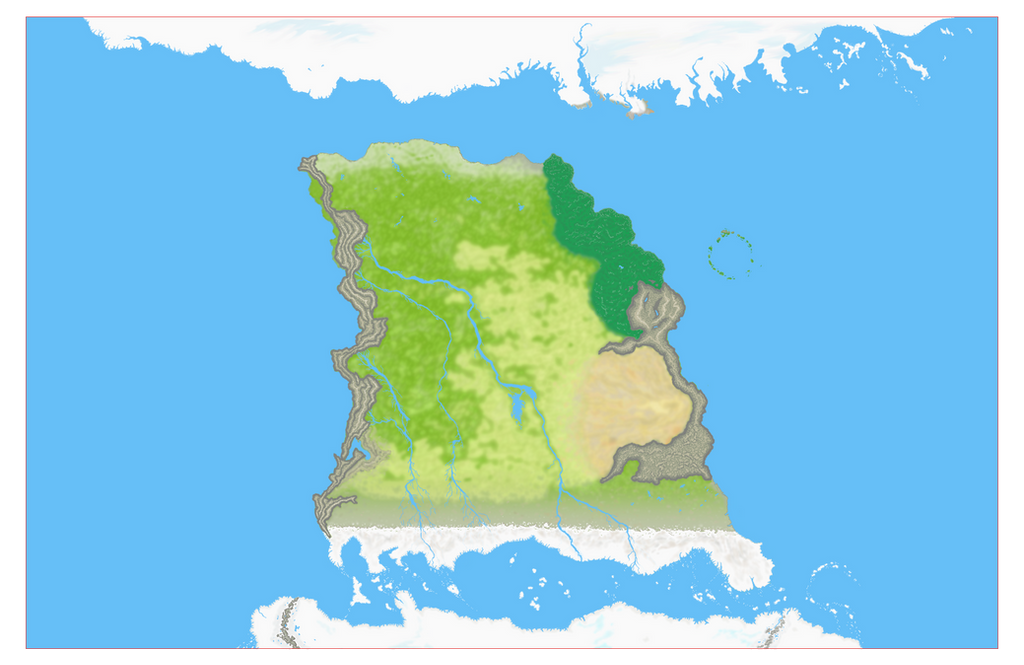HOME | DD
 Tapejara — Map of Geb
Tapejara — Map of Geb

#alien #caps #continent #desert #earth #earthlike #extraterrestrial #geb #geography #ice #islands #lake #map #mountains #ocean #plains #planet #plateau #range #river #savannah #supercontinent #tundra #typography #xenobiology #geb7
Published: 2015-08-24 03:16:37 +0000 UTC; Views: 4686; Favourites: 26; Downloads: 6
Redirect to original
Description
Here is a complete view of all of Geb's continents, rivers and islands that are currently known. Several other islands have yet to be discovered. Note that just like some maps of the Earth, some dimensions will be inaccurate because of how difficult it is to convert a sphere into a flat surface.Geb is younger than the Earth, and is about as old as the Earth was halfway through its Triassic period. All of its continents have collided together into one super continent named Colossica. It is divided in different regions based on their primary environments, including a vast Savannah at the center.
At first glance, the lifeforms that inhabit Geb strongly resemble dinosaurs. However, they mostly share similarities with monotremes because they lay eggs, nurse their young with milk that oozes from their skin, possess fur coats (that are slowly disappearing as the planet warms up) and a high metabolic rate. Some other animals, like the pteropods, give birth to larvae that pupate into the adult stage. The ice age was so brutal that many plants had to eat animals to obtain the essential nutrients, making Geb the planet with the most species of carnivorous plants known at this time.
Most life forms on Geb were given names derived from Latin words. There are a few exceptions that include the first few species identified which were instead given original names.
All stats are estimations that may be corrected in the future.
Diameter: ~12,109.9 km (other source suggest it is almost exactly 12,000.9 km)
Radius: ~6,054.95 km
Surface Land: 32%
Surface Water: 68%
Atmosphere: 70% nitrogen, 28% oxygen, 1% water vapor, 1% other
Year Length: 365 Earth Days
Day Length: 28 Earth Hours
Age: ~4.263 billion years (about the same age as when Earth was halfway through the Triassic period)
Distance from Sun: 150 million km
Stars: 1 Yellow Dwarf
Moons: 2
Other Features:
Geb's oceans have a lower salinity level. During the ice age, the oceans were full with millions of icebergs that eventually merged into a large ice sheet. The sheet was shattered when a meteor struck which created the Meteor Islands and ended the ice age.
Geb has two moons: Isis and Osiris. Isis is very similar structure to our moon, although somewhat more "rocky". Osiris is a ~100 km long non-spherical asteroid that got caught in Geb's gravitational pull.
Geb is said to give off a primeval and danger vibe to its first human explorers, almost like traveling back in time to prehistoric Earth.
























